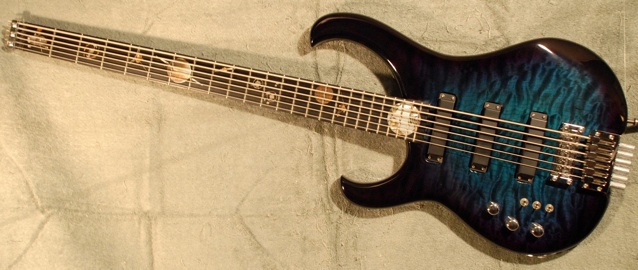

So, What Is This Bass Thing, Anyway?
 |
|
My Main Axe I suppose I should have put a more common bass guitar on display, but this one, my main instrument since the early Nineties, is much more interesting. It was custom-built for me by Modulus Graphite (now Modulus Guitars). It’s a headless, neck-through Quantum Six. The fingerboard inlay work was done by Larry Robinson. Looking at this and the other photos of me on the site, some of you may be asking, “Are all the photos backwards?” No, the deal is, I play left-handed and all my instruments are “lefties.” This is actually quite an advantage when teaching, because all of you right-handed students will be seeing essentially a mirror image when you sit across from me. I usually teach on a more conventional instrument, a four-string much like the one below. |
 |
|
Is The Bass Guitar a Guitar, Or a Bass? Above is a much more common instrument, in fact one could refer to the Fender Jazz Bass as being one of the “industry standards,” along with another Fender product, the Precision Bass. Note that it has four strings, which is also standard, although the popularity of “extended range” basses with five or, like mine, six strings is growing. The bass guitar is a descendant of the upright bass. In fact, the original idea was to come up with an instrument that did pretty much the same things as an upright, but a lot louder. It turned out that the electric bass could do much, much more than that. The instrument has the same tuning as the upright bass and more or less the same range harmonically. However, as with a guitar, it’s designed to be slung from a strap over the shoulder while standing or rested on a leg while seated. And although there are fretless electric basses, most have frets, also in common with the guitar. But when it comes to sound, the electric bass is a bass, not a guitar. |
@2012 JerryMark.com | All Rights Reserved